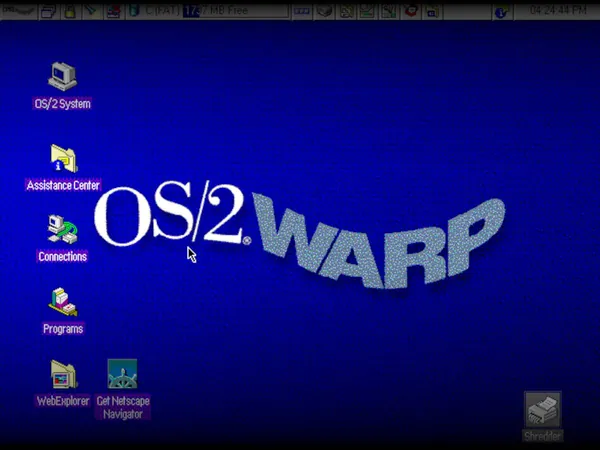
Why OS/2's Epic Fail Changed the Future of Computing Forever
2025-01-05
Author: Olivia
Introduction
In an intriguing exploration of one of the tech industry's most notorious misfires, a rediscovered 1995 Usenet post from Gordon Letwin—Microsoft's lead architect on the OS/2 project—has cast a spotlight on the reasons why OS/2 was ultimately a failure and how it unexpectedly shaped modern software as we know it.
The Roots of OS/2's Failure
The roots of this monumental flop can be traced back to the 1980s. During this period, the computing landscape was rapidly evolving, marked by a shift from 8-bit to 16-bit and ultimately to 32-bit architectures within a mere decade. This evolution paved the way for a future dominated by two main operating systems: Windows NT and Unix.
The Emergence of Windows 95
As Windows 95 loomed large, it was clear to many that OS/2 was merely ‘dead software walking.’ Letwin's post revealed that while OS/2 once commanded attention—especially with notable applications like Lotus 1-2-3 and WordPerfect available for its early versions—the platform had slipped out of relevance as Windows began to dominate the ecosystem.
The Software Development Dilemma
Letwin suggested that OS/2's core attraction lay in its ability to run Windows applications, but this perspective overlooks a crucial fact. The very reason for OS/2's shortfall stemmed from its inability to attract original software development. As the market gravitated toward Windows, it became clear that major developers were not interested in creating applications that could only run on OS/2.
IBM's Strategic Missteps
One of the pivotal moments that stunted OS/2’s growth was the decision by IBM—OS/2's collaborator—to focus on 16-bit systems when the 32-bit 80386 processor was already on the horizon. This limitation crippled OS/2's capabilities and left it unable to compete effectively with the already thriving Windows environment.
A Shift in Partnership
Moreover, Letwin highlighted that while Microsoft's eagerness to capitalize on the 386's potential was admirable, IBM's reluctance to pivot away from the established 286 system impeded OS/2's development. Had OS/2 been designed specifically for the advanced architecture of the 386, it could have excelled in multi-tasking DOS applications—a feature that would have been immensely attractive to users looking for sophisticated functionality.
The Birth of Windows NT
The rivalry between IBM and Microsoft ultimately led to a fracture in their collaboration, with Microsoft taking the reins to develop Windows NT—an operating system designed for the future rather than the legacy hardware. As Microsoft adapted and anticipated technological advancements, Windows NT emerged, systematizing the computing world with its forward-thinking design principles.
Conclusion
Today, decades later, the implications of OS/2's failure resonate through the tech industry, underscoring the importance of adaptability and innovation in software development. While OS/2 may live on as a cautionary tale, it also taught valuable lessons about market dynamics and staying ahead in technology—principles that tech giants like Microsoft continue to embrace as they navigate an ever-evolving digital landscape.









 Brasil (PT)
Brasil (PT)
 Canada (EN)
Canada (EN)
 Chile (ES)
Chile (ES)
 Česko (CS)
Česko (CS)
 대한민국 (KO)
대한민국 (KO)
 España (ES)
España (ES)
 France (FR)
France (FR)
 Hong Kong (EN)
Hong Kong (EN)
 Italia (IT)
Italia (IT)
 日本 (JA)
日本 (JA)
 Magyarország (HU)
Magyarország (HU)
 Norge (NO)
Norge (NO)
 Polska (PL)
Polska (PL)
 Schweiz (DE)
Schweiz (DE)
 Singapore (EN)
Singapore (EN)
 Sverige (SV)
Sverige (SV)
 Suomi (FI)
Suomi (FI)
 Türkiye (TR)
Türkiye (TR)
 الإمارات العربية المتحدة (AR)
الإمارات العربية المتحدة (AR)